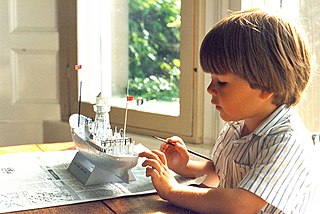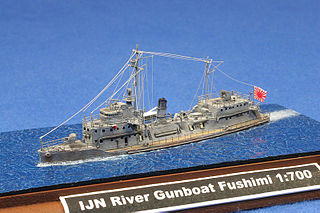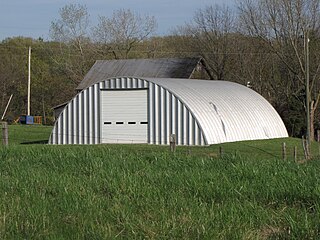
Ship models or model ships are scale models of ships. They can range in size from 1/6000 scale wargaming miniatures to large vessels capable of holding people.

A model aircraft is a small sized unmanned aircraft or, in the case of a scale model, a replica of an existing or imaginary aircraft. Model aircraft are divided into two basic groups: flying and non-flying. Non-flying models are also termed static, display, or shelf models.

A model vehicle or toy vehicle is a miniature representation of an automobile. Other miniature motor vehicles, such as trucks, buses, or even ATVs, etc. are often included in this general category. Because many miniature vehicles were originally aimed at children as playthings, there is no precise difference between a model car and a toy car, yet the word 'model' implies either assembly required or the accurate rendering of an actual vehicle at smaller scale. The kit building hobby became popular through the 1950s, while the collecting of miniatures by adults started to pick up momentum around 1970. Precision-detailed miniatures made specifically for adults are a significant part of the market since the mid-1980s.

A composite material is a material made from two or more constituent materials with significantly different physical or chemical properties that, when combined, produce a material with characteristics different from the individual components. The individual components remain separate and distinct within the finished structure, differentiating composites from mixtures and solid solutions.

A plastic model is a plastic scale model manufactured as a kit, primarily assembled by hobbyists, and intended for static display. A plastic model kit depicts various subjects, with a majority depicting military and civilian vehicles. A kit varies in difficulty, ranging from a "snap-together" model that assemble straight from the box, to a kit that requires special tools, paints, and cements.
Model military vehicles range in size and complexity; from simplified small-scale models for wargaming, to large, super-detailed renditions of specific real-life vehicles.
A model commercial vehicle is a scale model or die-cast toy that represents a commercial vehicle: truck (lorry), bus, etc.
Figure painting is the hobby of painting miniature figures and/or model figures, either in its own right or as an adjunct to role-playing games, wargames, military modeling, etc.

Homebuilt aircraft, also known as amateur-built aircraft or kit planes, are constructed by persons for whom this is not a professional activity. These aircraft may be constructed from "scratch," from plans, or from assembly kits.

Tamiya Incorporated is a Japanese manufacturer of plastic model kits, radio controlled cars, battery and solar powered educational models, sailboat models, acrylic and enamel model paints and various modeling tools and supplies. The company was founded by Yoshio Tamiya in Shizuoka, Japan, in 1946.

Scratch building is the process of building a scale model "from scratch", i.e. from raw materials, rather than building it from a commercial kit, kitbashing or buying it pre-assembled.
A garage kit (ガレージキット) or resin kit is an assembly scale model kit most commonly cast in polyurethane resin.

Life-Like was a manufacturer of model trains and accessories that began as a division of parent company Life-Like Products, a manufacturer of extruded foam ice chests and coolers. In 1960 the company purchased the assets of the defunct Varney Scale Models and began manufacturing model trains and accessories under the name Life-Like in 1970. In 2005 the parent company, known as Lifoam Industries, LLC, chose to concentrate on their core products and sold their model railroad operations to hobby distributor Wm. K. Walthers. Today, the Life-Like trademark is used by Walthers for its line of value-priced starter train sets.
Dragon Models Limited is a Hong-Kong-based manufacturer of plastic model kits, diecast models and military action figures. Founded in 1987, the company shares distribution agreements with Revell/Monogram, Revell Germany and Italeri in Europe, and Hasegawa and GSI in Japan.

The Hasegawa Corporation is a company that manufactures plastic model kits of a variety of vehicles, including model aircraft, model cars, model ships, model armor, model space craft and science fiction kits. Based in Shizuoka, Japan, Hasegawa competes against its neighbor, Tamiya, though it does not have as large a line of products.

A steel building is a metal structure fabricated with steel for the internal support and for exterior cladding, as opposed to steel framed buildings which generally use other materials for floors, walls, and external envelope. Steel buildings are used for a variety of purposes including storage, work spaces and living accommodation. They are classified into specific types depending on how they are used.

Reclaimed lumber is processed wood retrieved from its original application for purposes of subsequent use. Most reclaimed lumber comes from timbers and decking rescued from old barns, factories and warehouses, although some companies use wood from less traditional structures such as boxcars, coal mines and wine barrels. Reclaimed or antique lumber is used primarily for decoration and home building, for example for siding, architectural details, cabinetry, furniture and flooring.
Gundam models are model kits depicting the vehicles and characters of the fictional Gundam multiverse by Bandai. These kits have become popular among mecha anime fans and model enthusiasts in Japan and in other nearby Asian countries since the 1980s. Gundam modeling spread in the 1990s with North America and Europe being exposed to Gundam through television, video and manga. Gundam models, as well as the hobby of assembling and painting them, is known in Japan as Gunpla , a portmanteau of "Gundam plastic model", plastic being the most common material for the retail kits.


















